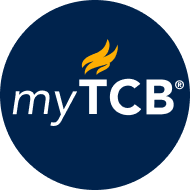


Members of The Conference Board get exclusive access to the full range of products and services that deliver Trusted Insights for What's Ahead ® including webcasts, publications, data and analysis, plus discounts to conferences and events.
09 April 2020 / Report
The trajectory of COVID-19 remains uncertain around the world. The Conference Board predicts a deep contraction in Q2 and has a scenario of even extended economic weakness in Q3.Organizations should prepare for these worst-case scenarios, which have high probability. As some businesses shut down to slow the spread of the virus, many more have started various cost-cutting measures to avoid layoffs.1
The trajectory of COVID-19 remains uncertain around the world. The Conference Board predicts a deep contraction in Q2 and has a scenario of even extended economic weakness in Q3.Organizations should prepare for these worst-case scenarios, which have high probability. As some businesses shut down to slow the spread of the virus, many more have started various cost-cutting measures to avoid layoffs.1
Why avoid layoffs? Previous research shows that they often result in negative outcomes such as loss of skills, learning, productivity, and innovation; low employee morale; and brand reputational risks,2 as well creating the risk of a slower recovery.3 Knowing this, CEOs at some leading companies (e.g., Morgan Stanley, Citigroup, Visa, FedEx, Bank of America) have taken a stand and committed to not conducting layoffs.4
Although many organizations have decided to keep all employees in the short term, the longer the COVID-19 crisis lasts, the more companies in survival mode may feel compelled to make the tough call. In the US alone, over 16 million people filed unemployment insurance claims in the past three weeks (ending April 4, 2020).5&n

myTCB® Members get exclusive access to webcasts, publications, data and analysis, plus discounts to events.
You already have an account with The Conference Board.
Please try to login in with your email or click here if you have forgotten your password.

To strengthen your Gen Z appeal, make career mobility visible
December 05, 2025

To build a skills-based talent strategy, start small and scale smartly
November 21, 2025

To build resilience, deepen HR and corporate citizenship integration
November 14, 2025

To boost engagement, elevate the informal moments that matter
November 07, 2025

